United States Air Service
USAS HistorySummary 1917-1918 Lafayette Escadrille
N.124/Spa.124 1st Observation
1st, 12th, 50th, 88th 1st Pursuit Group
27th, 94th, 95th, 147th 1st Bombardment
96th, 11th, 20th 2nd Pursuit Group
13th, 22nd, 49th, 139th 3rd Pursuit Group
28th, 93rd, 103rd, 213th 4th Pursuit Group
17th, 148th, 25th, 141st 5th Pursuit Group
41st, 138th, 638th 3rd Air Park
255th. List of Aces
United States Naval Aviation
US Naval AviationUnited States Marine Corps Aviation
US Marine AviationAircraft
 Nieuport 28
Spad VII
Spad XIII
Fokker Dr.1
Albatros D.Va
Fokker D.VII
Nieuport 28
Spad VII
Spad XIII
Fokker Dr.1
Albatros D.Va
Fokker D.VII
Website: Atlanta SEO
E-mail us
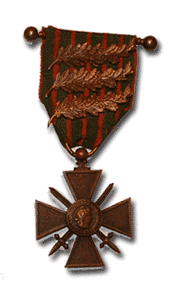
Related Links: Nieuport 17 | Nieuport 28 | Spad VII | Spad XIII | Spad XVI | Fokker D.VII and other German aircraft | Halberstadt CL.IV | Fokker Dr.1 | Albatros D.Va | Caudron G4 trainer | USN Curtiss N-9H trainer | USN Thomas Morse SC-4 | USN Hanriot HD-1 | USN Sopwith Camel | What was the first American fighter plane?
Nieuport 28
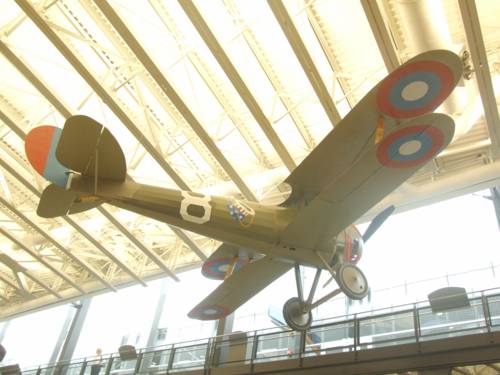
Nieuport 28 in 94th Aero Squadron livery
The Nieuport 28 was America's first fighter airplane for an American fighter squadron other than the Lafayette Escadrille. Thus technically, the Nieuport 28 is the USAF's second fighter plan since the Spad VII was used by the Lafayette Escadrille when it flew for France. When the Lafayette Escadrille became a USAS (now the USAF) squadron, it migrated to American service with its Spad VII planes.
The US Army Air Service had already had some experience flying around searching for Pancho Villa, as part of the 1916 punitive expedition led into Mexico by John J. Pershing. There had even been an idea to hold a large machine gun into the air to use it for air to ground attacks.
At the start of American involvement in World War I in April 1917, American industry promised it would produce 45,000 or so fighters; but not a single one was delivered in time to fight the war. So there were no American combat aircraft when the US joined the war and there were too few Spad VII or Spad XIII fighters, thus the Americans ordered 297 Nieuport 28s.
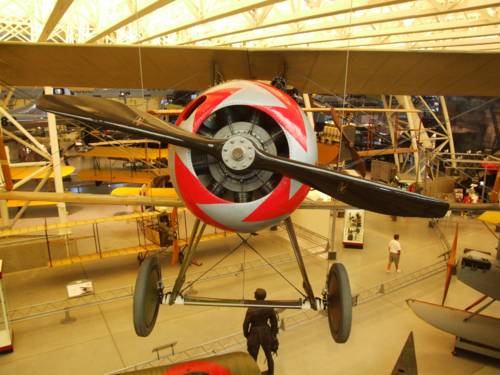
Nieuport 28
And so the brave American pilots of the 1st Pursuit Group (meaning the 27th, 94th, 97th and 147th Aero Squadrons) initially all flew the French Nieuport 28 biplane. This was a light 1,200 pound fighter 24 feet long with a 26 foot wingspan capable of 122 miles per hour. The 28 was derived from earlier Nieuport 17 and its descendants.
The aircraft was equipped with a nine cylinder air cooled engine developing 160 horsepower. The service ceiling was 17,390 feet, but Eddie Rickenbacker speaks of viewing the world from 15,000 feet. The Nieuport 28 was armed with two twin synchronized .303 Vickers machine guns.
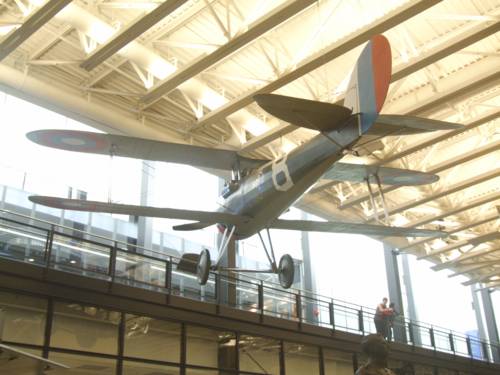
Nieuport 28
These numbers seem feeble, especially considering that today's typical four door sedan has significantly more horsepower, more weight and in some cases similar top end speeds. But back then, these aircraft were the leading edge of technology - nearly as impressive in those days as today's stealth combat fighters are to us.
The 94th and 95th received their Nieuports and made them operational in mid-March, 1918, but without any machine guns, which would arrive a few weeks later. In the mean time, the Americans familiarized themselves with their new planes.
By mid-April, the guns had arrived, were installed and the units were considered fully operational.
Still, even then the Nieuport 28 was considered an inferior design by the French as it reached production. Designs and combat aircraft technology was evolving very rapidly obsoleting front line aircraft in a year or even in months. The Nieuport had already been superseded and so the French ordered the legendary Spad XIII instead.
The Nieuport, which, according to a number of sources which all use the same words without much further elaboration, had a "tendency to shed its wings" while flying. The earlier marks of Nieuports would sometimes shed their wings too.
However, according to www.acepilots.com, only four of the 298 Nieuports used by the US had fabric stripped from their wings in a dive, etc., and none of them appears to have caused any fatalities. Two of the incidents were for the same pilot, so perhaps it might have been something specific he was doing in pushing the aircraft beyond its design limits. Here is what actually happened:
" 2 May 1918
* 94th - Lieutenants Meissner, Winslow and Davis attacked a formation of three enemy bi-place machines north of Pont-a-Mousson. After a short fight Lieutenant Meissner brought one machine down in flames near the Foret de la Rappe. The fabric of the leading edge and on the lower wings was torn loose during the combat and he was subjected to heavy anti-aircraft fire from German batteries but by skillful operation and cool determination he managed to coax the crippled airplane across the American lines."
"Captain Hall while following a Fokker in a dive lost the fabric on his wings and his plane was hit by a dud anti-aircraft shell and felt into a spin. On making a crash landing in German territory he suffered a broken ankle and was taken prisoner. "
Rickenbacker actually had a structural wing problem:
" 17 May 1918
* 94th - Lieutenant Edward Rickenbacker engaged three enemy Albatros scouts near Richecourt and succeeded in destroying one. The other two dove for their side of the lines and in diving after them the wing on Lieutenant Rickenbacker's type XXVIII Nieuport snapped. By good luck he managed to nurse the crippled Nieuport back to the airdrome without being sighted by a single enemy airplane "
The United States had 298 of these Nieuport 28s and operated them for several months in combat. It thus appears that the oft stated information of Nieuport 28s having a tendency to lose their wings has been overemphasized.
Much of the above are excerpts from my book "American Eagles". Please support this website and our efforts to recognize our first combat aviators by buying it. Here are more Nieuport 28 photos from various museums including the silver Nieuport 28 in Pensacola and the camouflaged Nieuport 28 at the National Air and Space Museum:
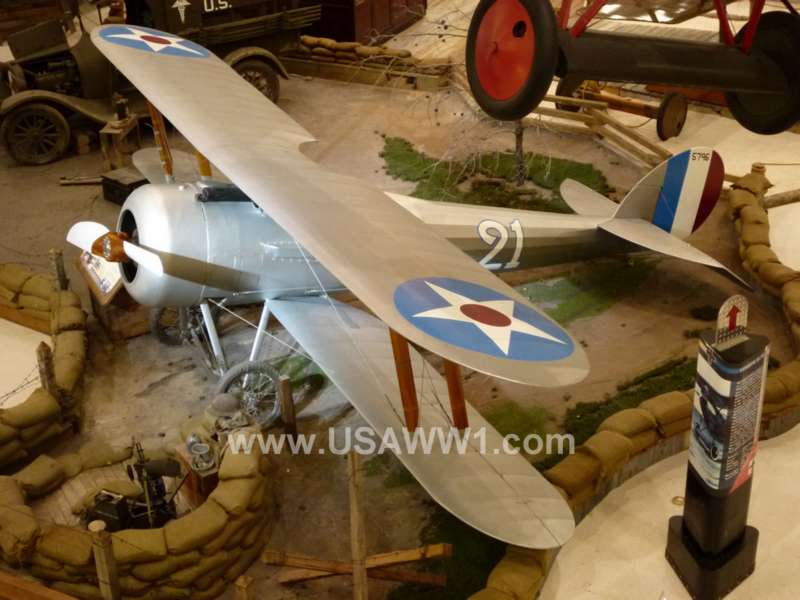
Nieuport-28-00
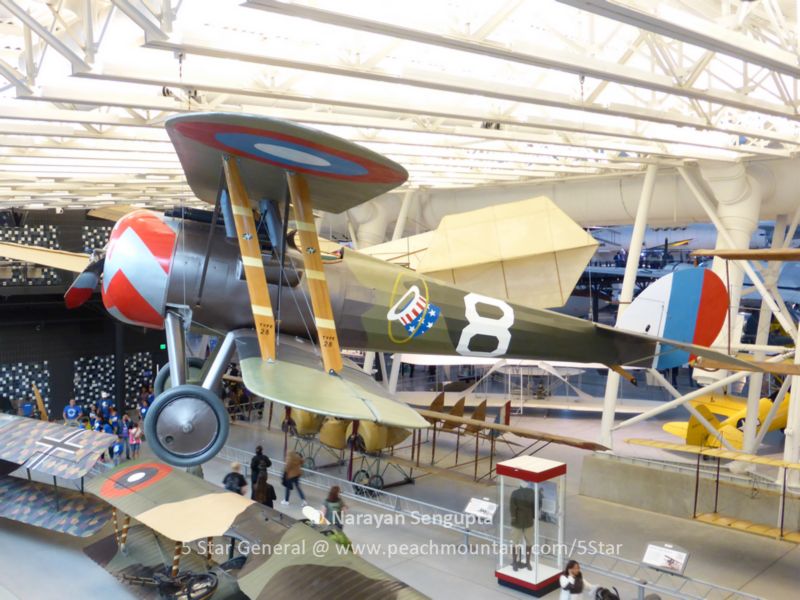
Nieuport-28-01
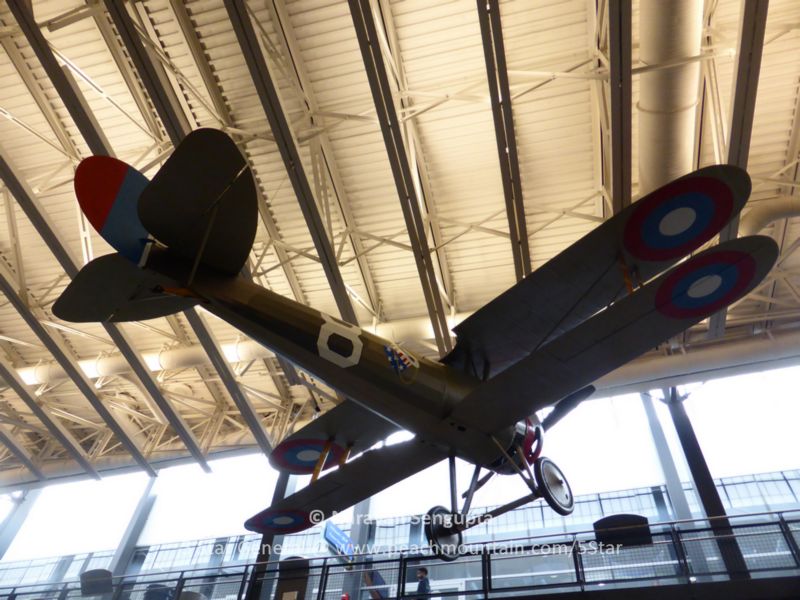
Nieuport-28-02
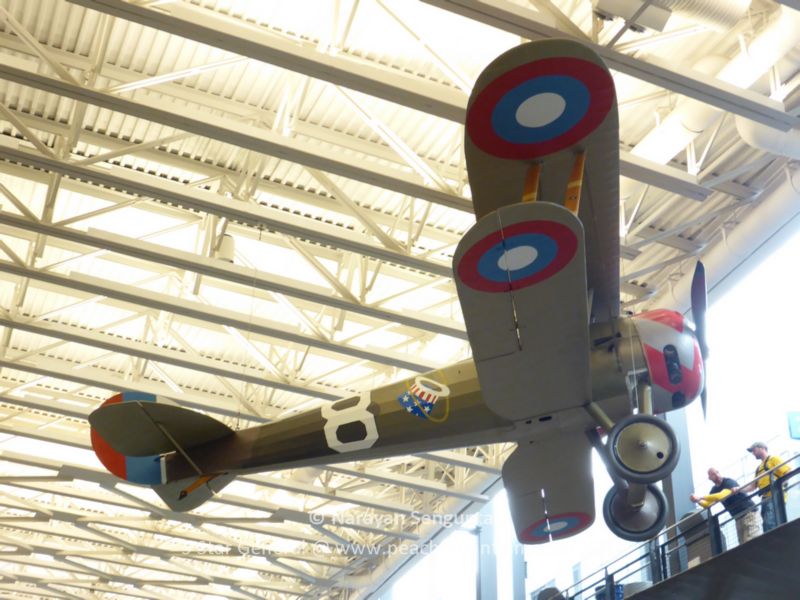
Nieuport-28-03
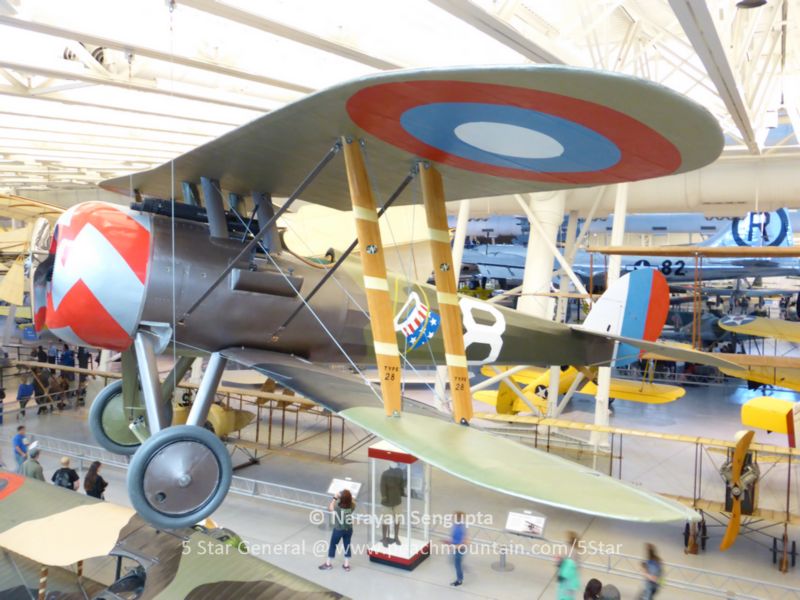
Nieuport-28-04
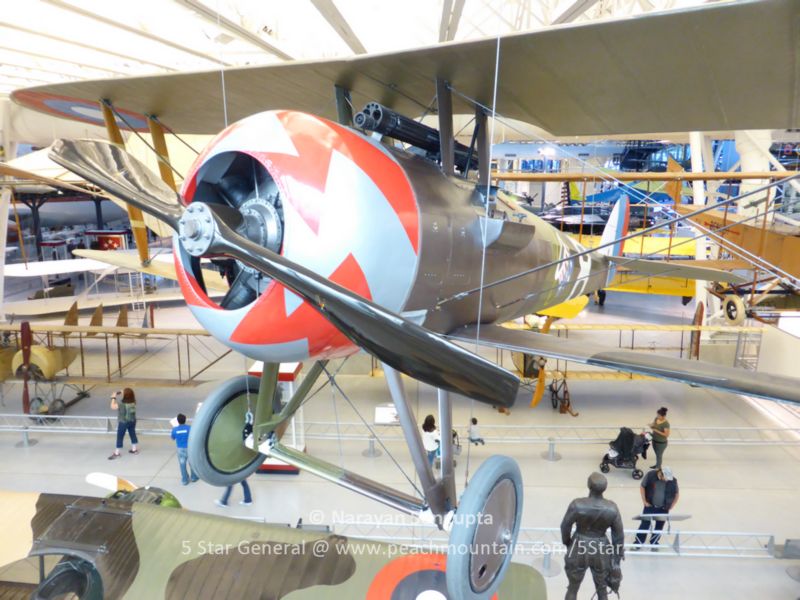
Nieuport-28-06
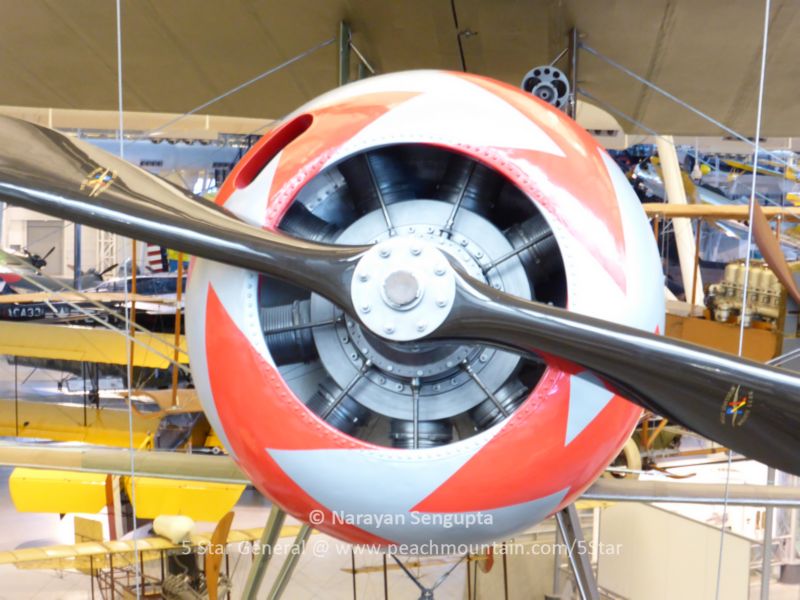
Nieuport-28-08
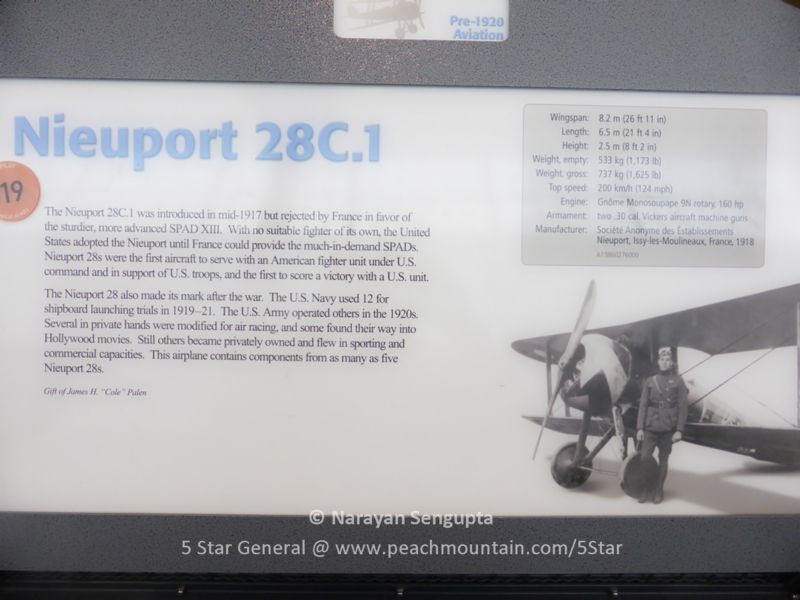
Nieuport-28-10
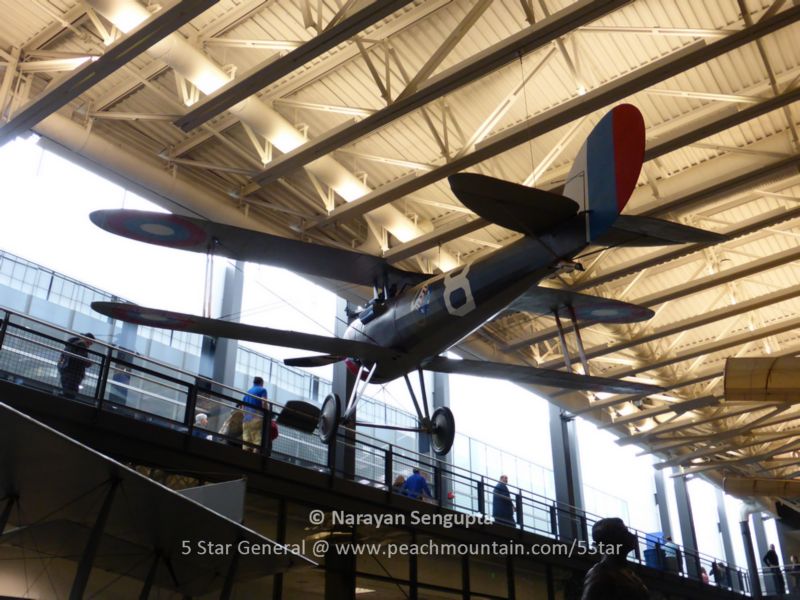
Nieuport-28-11
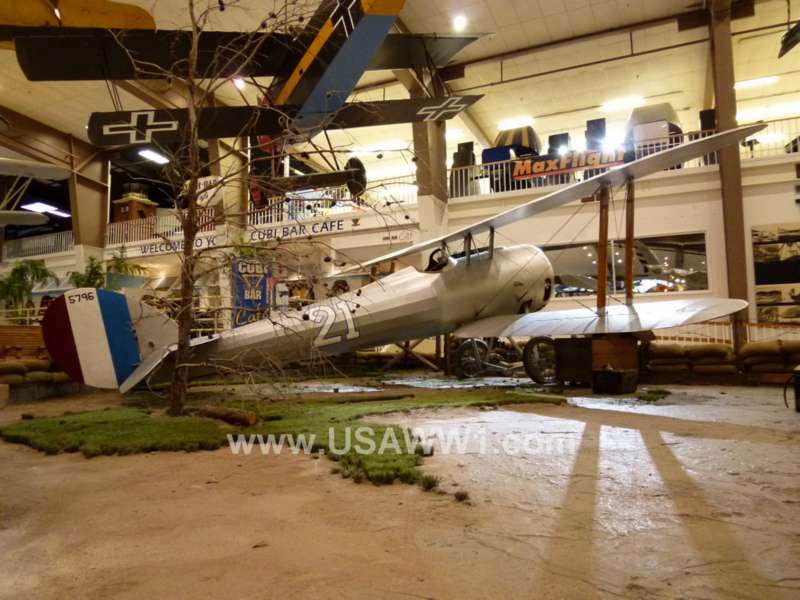
Nieuport-28-12
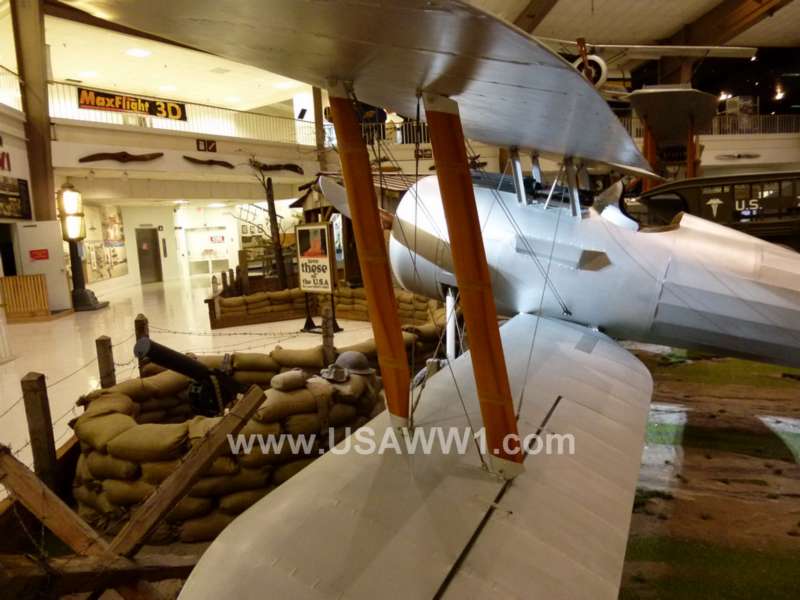
Nieuport-28-13
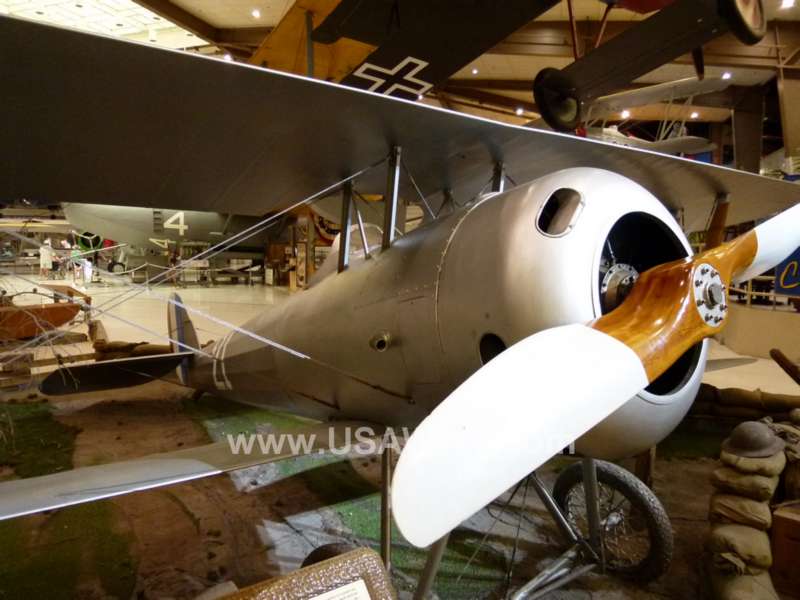
Nieuport-28-14
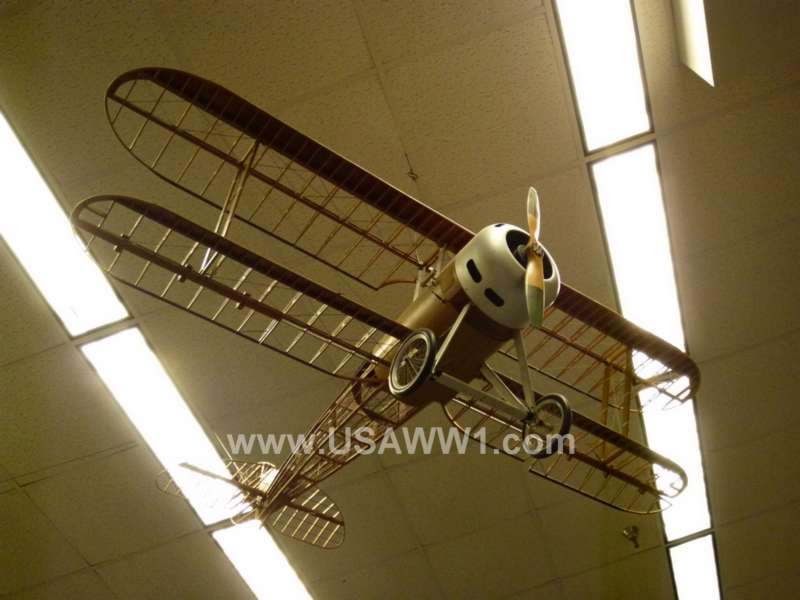
Nieuport-28-15
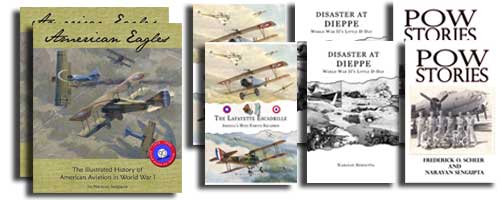
Books (.pdf Downloads) by Narayan Sengupta and Fred Scheer/Narayan Sengupta:
$ 9.95 American Eagles - The Illustrated History of American Aviation in World War I
$ 9.95 Lafayette Escadrille: America's Most Famous Squadron
$ 9.95 POW Stories of World War II
$ 9.95 Disaster at Dieppe: World War II's Little D-Day
$19.95 The Used Tank Guide of World War I and World War II
Computer Game Downloads by Narayan Sengupta:
$13.95 Hearts of Iron II scenarios (does not include game)
$13.95 Railroad Tycoon 3 scenarios/maps (does not include game)
Other:
Satisfaction Guarantee - Payment Methods - Questions/Contact Us - Donations
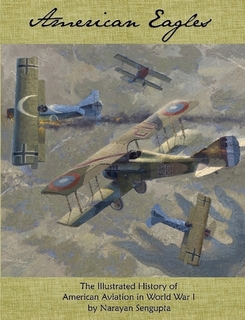
Preview (29 pages, 4.1 mb PDF).
"American Eagles - The Illustrated History of American Aviation in World War I" (370 pages, 8.5"x11", black and white, $9.95, .pdf download):
American Eagles features 220 photos, new maps and beautiful artwork by Michael O'Neal. Here's the story of American World War I combat aviation, the aviators, their planes, aerodromes, stories and their post-war lives. Read about America's first fighters, bombers and observation planes, the Lafayette Escadrille, USN Aviation, USMC Aviation, the United States Air Service, etc.
"I wanted to tell you what a great job you have done with your book! I have been totally enthralled reading through it!"
Gary Duhaine
"A great book... a book that really needs to be on your bookshelf."
Matt Jolley, WarbirdRadio.com
"The photos in your books have a clarity I have not seen among the hundreds of WWI aviation books that I've collected/amassed. Those photos make you feel like you are standing there with the subjects. Outstanding! Your passion for the subject is evident!"
Mark, Lt Col, USAF (Retired)
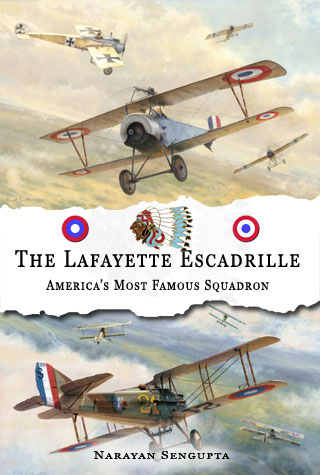
Preview (Table of Contents, Table of Illustrations, Chapter 1, 1.0 mb PDF)
"Lafayette Escadrille: America's Most Famous Squadron" (204 pages, digest size, black and white, $9.95, .pdf download):
The Lafayette Escadrille honors the insanely brave Americans who volunteered to fly for France and later the United States 103rd Aero Squadron during World War I. Read about Raoul Lufbery, Bill Thaw, Kiffin Rockwell, Norman Prince, Charles Biddle and the early days of American World War I military aviation before it was known as the United States Air Force. These men flew Nieuports and Spads against Fokkers and Albatroses. This book has extensive new research and is thoroughly well-documented. 204 pages, 62 photos and maps.
"Narayan Sengupta's "The Lafayette Escadrille: America's Most Famous Squadron" is a wonderfully written history of one of the most unique air combat units that ever existed. Not only is his book factual and chock full of historical photos (80+), the text is nicely augmented with maps, appendices, and a very complete bibliography. Great job, all around!"
Steve Ruffin, Managing Editor emeritus, "Over the Front."
"You write so well! I thoroughly enjoyed it and learned a lot."
Cynthia Pullin
"A concise, well written history of one of the most significant fighter squadrons in American history. Long before the US entered World War One, these volunteers showed that not all Americans were "too proud to fight." They helped defend the skies of France and laid the groundwork for what would eventually become the United States Air Force. Mr. Sengupta has done an excellent job of telling the story of some of the most colorful individuals in American history. Very readable and superbly illustrated, the book is thoroughly researched and well documented."
Steve Tom, PhD, Lt Col USAF (Ret)
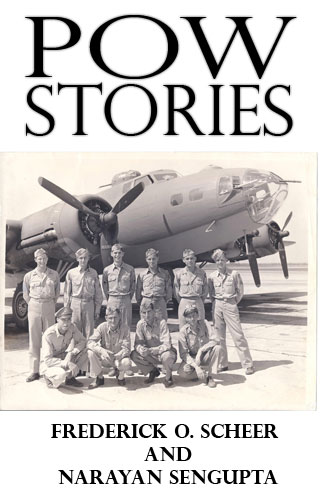
"POW Stories" (189 pages, 6"x9", black and white, $9.95, .pdf download):
POW Stories: remarkable stories told by men once POWs in Germany. Some were in the US Army, others in the United States Army Air Force. Read exhilarating, astonishing and poignant real-life stories by Fred Scheer, James Golden, Les Schrenk and many others. All were POWs in Germany during WWII. Jim was a Mustang pilot who was the last Allied pilot shot down on D-Day. Fred escaped twice and was recaptured. He made it out for good on his third escape. And Les survived the brutal German Death March. 189 pages, 35 photos and maps.
"POW Stories is a masterfully assembled collection of first-hand tales of survival, comradery and reunion, an emotional journey of brave men recounting their highs and lows and finding humor in the darkest places. The stories should never be forgotten. Well worth the read."
Patricia W. Huff
"I thoroughly enjoyed it and shed a fair amount of tears because it was so REAL. Their tales are shared so simply but the impact on the reader is huge. Excellent work."
Judy Bentley
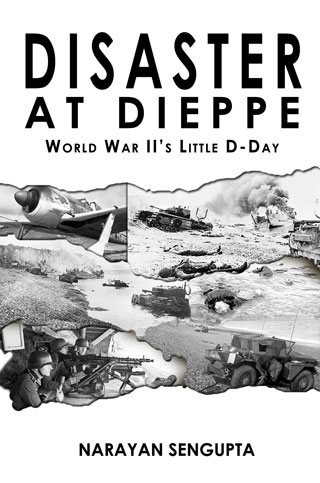
"Disaster at Dieppe" (167 pages, 6" x 9", 66 photos and maps, $9.95, .pdf download):
The raid on Dieppe, code named Operation Jubilee, was World War II's first invasion/large scale raid. Jubilee featured the first use of US Rangers, Churchill tanks, tanks in an amphibious assault, P-51s and Typhoons and more. Approximately 6,000 troops crossed the English Channel: they included 5,000 Canadians, 1,000 British, 50 American Rangers and 24 French light infantry. Poor planning and Murphy's Law led to an 85% casualty rate for the Canadians who landed! It was a rate brutally worse than the horrific 10% suffered by the US Marines at Tarawa in late 1943 or the 15% sustained by Americans on D-Day, June 6, 1944, at Omaha Beach. But their sacrifice was not in vain and may have saved 10 times as many lives on D-Day. This is an easy read that's also thoroughly documented. Its tables and six-page index makes it a great reference book. 167 pages, 6" x 9", 66 photos and maps.
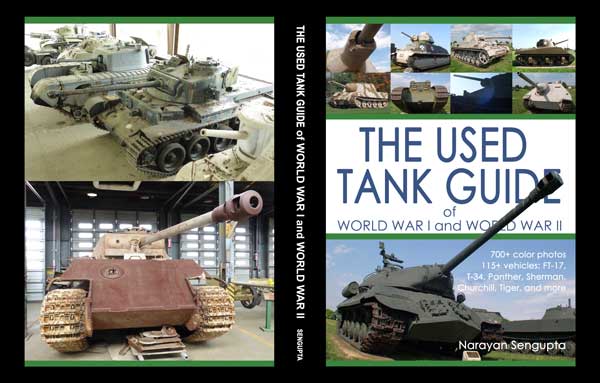
"The Used Tank Guide of World War I and World War II" (230 pages, 8.5"x11", full color, 700+ photos, .pdf download, $19.95):
The Used Tank Guide has a 36-page overview of World War I and World War II tanks (and self-propelled artillery and tank-destroyers, etc.). Then is the eye-candy photo album section with 700+ fantastic full-color photos and 115+ profiles of tanks, self-propelled guns and tank destroyers in the most color-packed book on World War I and World War II armored vehicles ever...
Profiles include: British Mark IV, Whippet, Anglo-American Mark VIII, Schneider, St. Chamond, Renault FT, GPF 155, Somua S-35, Char B-1bis, AMR-33, R-35, AMC-35, Hochkiss H-35, Sexton, LT-35, Matilda II, Churchill, Valentine, Crusader, Cromwell, Comet, Panzer I, Panzer II, Panzer III, Panzer IV, Wespe, Marder, Hetzer, Nashorn, Brummbar, Panther, Panther II, Tiger, King Tiger, Jagdpanzer, Elefant, Jagdpanther, Jagdtiger, Skelton, Ford 3 Ton, M1931 Christie, M3 Stuart, M3 Lee/Grant, M4 Sherman (75, 76, Easy 8 and Firefly variants), M-6 heavy, M-18 Hellcat, M7 Priest, M8 Greyhound, M10 Wolverine, M24 Chaffee, M26 Pershing, T28, M40, LVT(A), T-34, T-34/85, KV-1, SU-76, SU-85, SU-100, IS-2, IS-3, Semovente da 75/18 M42, Type 95 Ha-Go, Type 97 Chi-Ha, and so many more stunning tanks and rare tanks from across the world.
This exquisite collection showcases tanks in full-color as never seen before. Countries represented: Canada, Czechoslovakia, France, Germany, Italy, Japan, Sweden, USSR, United Kingdom and USA.
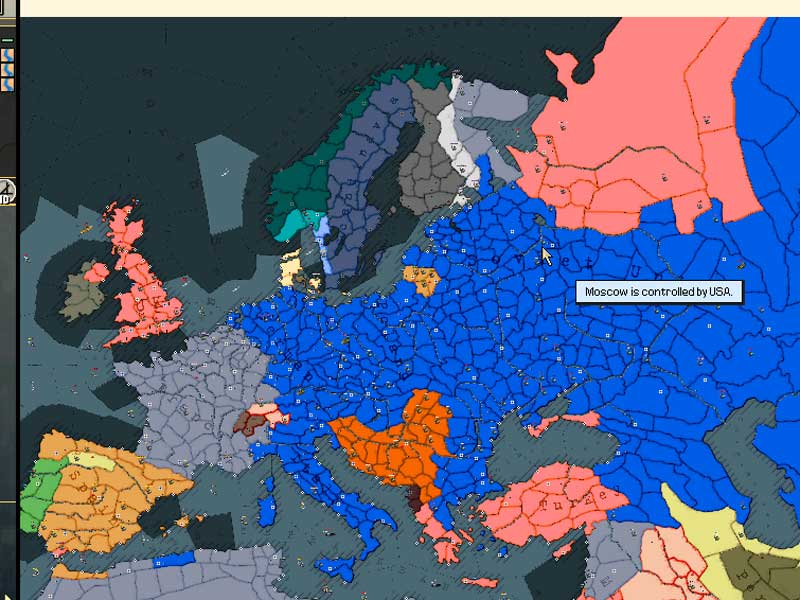
Bad Boys is a terrific scenario where the US President makes the United States very aggressive, attacking Nazi Germany and other dictatorships, but the US sells its soul in the process... Download for $13.95. Original game not included, but can be bought elsewhere online. Hearts of Iron II scenario - Bad Boys! - more information on my 5 Star General website...
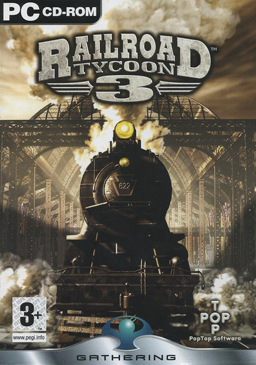
Here are several terrific extra maps (scenarios) for Railroad Tycoon 3. Download for $13.95. Original Railroad Tycoon game NOT included, but can be bought elsewhere online. More details: Railroad Tycoon 3 Maps!
Help us keep offering our research services. We typically spend 30 minutes per person we assist. If you like the help you received, then consider donating $25 (or any amount you would like). It pays for our hosting fees, research time, the resources we use for research, things we e-mail you and much more. This all helps to keep alive the proud legacy of the United States Air Service and our American World War I pilots, observers and other personnel.
30-Day Guarantee
If you are unsatisfied with download bought here, let me know at E-Mail Us within 30 days from the day of your purchase, and I'll refund you 100% of your money. If you are unsatisfied with any of my books (print version), then I let me know and I will refund you 50% of the purchase price (not including shipping and handling). You can even keep the book! We lose money, but we're confident you will be pleased with the book.
Payment Methods
We accept all major credit cards and PayPal.
Questions
If you have any other questions, then please E-Mail Us .
Related Links: Quentin Roosevelt | Frank Luke | Eddie Rickenbacker | Raoul Lufbery | Eugene Bullard | David Ingalls - 1st Navy Ace | "American Eagles" - 345 page illustrated history of US Combat Aviation in World War I
Events/Airshows
 Events/Airshows
Events/Airshows
Pilots/Aviators
 Raoul Lufbery
Raoul LufberyAce of Aces Eddie Rickenbacker
26 victories Quentin Roosevelt
Son of President KIA Frank Luke
18 victories in 17 days Eugene Bullard
1st African Am. Pilot David Ingalls
1st US Navy Ace List of USAS Pilots
Find a Relative American WWI Pilots
Mini bios
USAS Research
 USAS Videos
Reading List
USAS Videos
Reading ListWWI US Aviation Related Links
WWI US Aviation Credits War Wings
by Phillip W. Stewart WWI Maps
Units & Airfields Payne Field
USAS Aerodromes now... USAS Archives
Questions? Need Help? American Expeditionary Forces
WWI Doughboys in France